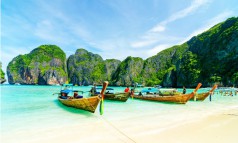



















Tuesday, May 20, 2025 10:00 [IST]
Last Update: Monday, May 19, 2025 16:49 [IST]
Northeast India is one of the most enchanting yet underexplored regions of the country, known for its stunning natural landscapes, rich biodiversity, and vibrant cultural heritage. Comprising eight states—Arunachal Pradesh, Assam, Manipur, Meghalaya, Mizoram, Nagaland, Tripura, and Sikkim—the region is blessed with an extraordinary variety of flora, fauna, rivers, hills, and forests. Despite these abundant natural assets, Northeast India remains relatively untouched in the mainstream tourism narrative, especially in the domain of eco-tourism. The immense potential of the region in promoting sustainable tourism has yet to be fully recognized and harnessed. With growing awareness about environmental preservation and responsible travel, eco-tourism offers a promising pathway for economic growth, cultural preservation, and ecological sustainability in Northeast India.
Eco-tourism, which revolves around visiting natural areas with minimal environmental impact and promoting the well-being of local communities, fits perfectly with the ethos of the Northeast. The region’s landscapes are still pristine, often untouched by the rapid urbanization seen elsewhere. This ecological richness is matched by its cultural diversity; the Northeast is home to over 200 indigenous communities, each with unique traditions, languages, and ways of life deeply connected to the natural environment. The symbiotic relationship between people and nature here creates a fertile ground for eco-tourism initiatives that respect and preserve both cultural and environmental heritage.
One of the most remarkable aspects of Northeast India is its biodiversity. It hosts several national parks and wildlife sanctuaries, many of which are recognized globally for their unique ecosystems. Kaziranga National Park in Assam, a UNESCO World Heritage Site, shelters the world’s largest population of the endangered one-horned rhinoceros. Similarly, the Manas National Park, also in Assam, is renowned for its rare and endangered wildlife species, including the Bengal tiger and golden langur. Arunachal Pradesh boasts the Namdapha National Park, one of the largest protected areas in India, home to diverse species such as clouded leopards and red pandas. Meghalaya’s dense forests, Meghalaya caves, and living root bridges offer unique ecological attractions. These natural wonders are ideal for eco-tourism activities like wildlife safaris, bird watching, trekking, nature photography, and environmental education.
Despite such potential, Northeast India’s eco-tourism sector remains largely underdeveloped due to several challenges. Infrastructure inadequacy is a major hurdle, with poor road connectivity, limited air travel options, and scarce accommodation facilities deterring potential tourists. The hilly and difficult terrain, while contributing to the region’s charm, also makes infrastructural development more complex and expensive. Many areas are still remote and hard to reach, especially during the monsoon season, which sees heavy rainfall and occasional landslides. Moreover, lack of proper marketing and promotion means that many travelers, both domestic and international, remain unaware of the region’s eco-tourism possibilities.
Another significant challenge is the need for sustainable and community-centric tourism models. Eco-tourism must not become a source of environmental degradation or cultural disruption. Northeast India’s indigenous communities have traditionally lived in harmony with nature, relying on sustainable practices that have preserved their environment for generations. However, unregulated tourism can disrupt this balance, leading to pollution, habitat loss, and cultural commodification. Therefore, any eco-tourism initiative must actively involve local communities, empowering them as custodians and beneficiaries of tourism development. Training locals as guides, promoting homestays, and encouraging the sale of local handicrafts and produce can ensure that tourism revenue stays within communities and incentivizes conservation.
Government efforts to promote tourism in the Northeast have increased in recent years. Various schemes focus on improving connectivity, building infrastructure, and promoting the region’s unique cultural festivals and natural attractions. The Ministry of Tourism’s “Incredible India” campaign has featured Northeast destinations, drawing some attention to the area. State governments have also been proactive in organizing cultural festivals and developing eco-tourism circuits. For example, Nagaland’s Hornbill Festival has become a significant tourist draw, showcasing the culture of Naga tribes amidst the scenic hills. Arunachal Pradesh has begun promoting border tourism, emphasizing the region’s picturesque landscapes and rich biodiversity. Despite these initiatives, a more integrated approach involving local stakeholders, environmental experts, and tourism professionals is necessary to realize the full potential of eco-tourism in the region.
The environmental sensitivity of the Northeast demands that eco-tourism development is aligned with sustainability principles. Conservation of biodiversity, protection of endangered species, waste management, and regulation of visitor numbers are crucial aspects to consider. Ecological impact assessments and continuous monitoring should accompany tourism projects to ensure they do not harm fragile ecosystems. Promoting responsible behavior among tourists, such as “leave no trace” ethics, can help preserve natural sites. Additionally, educating tourists about the cultural significance and ecological importance of the destinations they visit can deepen appreciation and foster respect.
The economic benefits of eco-tourism in Northeast India can be transformative for local populations. Many parts of the region suffer from limited industrial development and lack of job opportunities, leading to migration to urban centers. Sustainable tourism can create livelihood opportunities within rural and tribal areas, reducing this outward migration. Small-scale enterprises, including guided tours, handicrafts, local cuisine, and eco-lodges, can thrive under eco-tourism, contributing to the socio-economic upliftment of communities. Moreover, tourism revenue can fund community welfare projects, education, and healthcare services, improving overall quality of life.
Digital technology and social media offer new avenues to promote Northeast India’s eco-tourism potential. Virtual tours, interactive travel platforms, and online booking systems can make it easier for tourists to discover and plan visits to the region. Documentaries, blogs, and social media influencers showcasing the region’s natural beauty and cultural richness can attract a global audience. Local entrepreneurs and tourism operators can leverage these tools to reach niche markets interested in nature-based and cultural tourism.
In conclusion, Northeast India stands at a critical juncture where its unexplored eco-tourism potential can be harnessed for sustainable growth. The region’s natural wealth, combined with its rich cultural heritage, provides a unique canvas for eco-tourism that benefits both nature and people. Overcoming infrastructural challenges, fostering community participation, ensuring environmental protection, and adopting modern marketing strategies are essential steps in this journey. With concerted efforts from government, local communities, and private stakeholders, Northeast India can emerge as a premier eco-tourism destination, contributing significantly to the region’s economic development and environmental conservation. This not only enriches the lives of local people but also offers travelers an authentic and meaningful connection with nature and culture, helping preserve the pristine beauty and traditions of this extraordinary region for generations to come.
---------------------------------------------------------
Email - himangshur1989@gmail.com
